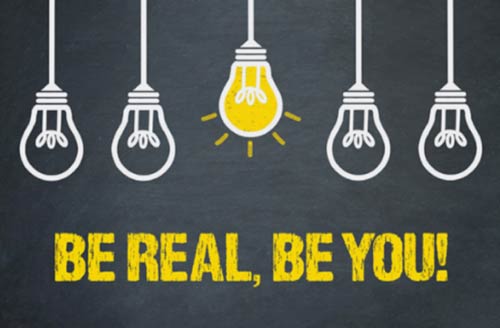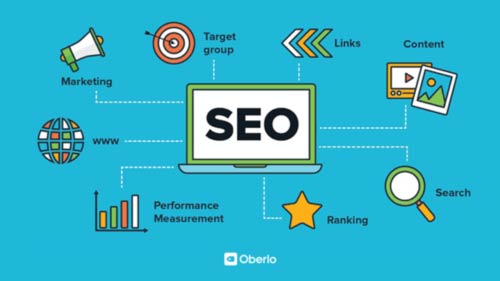Blog
The journey to building an online brand
– Venkatesh Rangachari
(Part 1)
Over the past few months, through multiple webinars and conversations with prospective clients we have been creating a template for brands who want to move from Offline to Online.
There are concerns about budgets, which mediums to use, what to do as a first step – a lot of anxious questions from founders and CEOs with small teams, looking to find some answers and fixes to building their brands online.
We think, the journey can be categorised in a few key directions.
Brand Consistency:
A lot of the journey has to do with explaining your brand to new customers through your marketing strategy. This information goes out through your website, social media platforms (Linkedin/ Twitter/ Instagram / Youtube/ quora and others), webinars, blogs, articles. Social media and digital marketing are powerful weapons in this new age.
Consumers are already bombarded by information and marketing messages.
To drive your message, reply on two pillars:
- Consistency
- Frequency
News is made when there is new information. Whether once a week, twice a week, daily. Your task is to choose your frequency of information sharing and stay with it. A fixed timetable creates anticipation and that is a very big step in building recall and hence your brand’s identity and position.
However, the second pillar of consistency is very important. You can choose your messaging strategy and personality. Whether funny, serious, visual heavy, text heavy. Whether your content goes into an industry or several.
Repeated brand messages which are consistent in their nature are your most powerful allies in building the brand.
But give Consistency and Frequency some time to work in your favour. That is what will separate your start from your finish.
Brand Authenticity:

Authenticity is the ability to express the brand honestly. Standing by what the brand knows and what it doesn’t.
This is a difficult ask. Authenticity demands that we draw a clear line at who our customer is and who isn’t. Who we can serve and who we can’t!
For example: If your blog is for the SME market, what experience with this segment allows the writer to represent that segment. It shows in the issues that the blog would address, the solutions and the nature of storytelling.
Brand Originality:
If you think hard enough of your target segment’s challenges, you will find your own take on how to solve them. Originality is the demand made on your time to think about your consumer. To spend some time in her shoes.
And from this will come ideas that are unique to you, your way of thinking and your way of connecting with your customers.
Infact authenticity and originality are very close friends. They work very well together.
Brand Belief!

Knowing you believe in your company; its services and the brand gets communicated in very subtle ways.
Either the words you use, the frequency with which you communicate or even the topics you choose to communicate for your brand.
Prospective buyers are looking to trust you and your brand. Brands need their owners to stand in front of them sometimes, besides them at other times and behind them when times are toughest. Are you there for your brand?
That’s when customers see authenticity and reliability in your brand/ product or service.
Consistently delivering on these 4 tasks is in our view a very powerful way of getting your brand known out there.
The Journey to building your online brand
(Part 2)

The best online platforms to use.
Here are some platforms that can aid your journey.
These are social media platforms which rely on shared content to build your brand among a relevant audience. Social media marketing has become a science in itself, and our view is that at the early stage of your brand story, some investment of time is perhaps sufficient to understand and develop your brand online, gradually, some hiring of “expertise” could help you on accelerate your journey.
If you are a B2B brand,
Your website is a great place to start. Blogs/ white papers and case studies are good examples of how you can demonstrate your brand’s capabilities and differentiation.
Content here also helps customers searching for your services reach you through Google’s search algorithms. It may not be a bad idea at all at this stage to speak to “SEO” experts that can help you identify what topics to right on so that the search leads right to your doorstep.

A website audit and a directory of articles suggested by an expert will be very useful in creating relevant content. Content is the key here and what you present will enrich not only your own web site but other platforms where you could share the same.
Typically, content on your website should follow the following rules:
- Once in two days is a reasonable start point.
- The content could be your own or re-shared from elsewhere, ideally with your take on the subject.
- Content here could be blogs- 500-1000 words, white papers, videos, case studies.
- Articles about functional expertise/ industry matters do better than those promoting the brand directly.
- Interspersing personal journeys along with the brand (1/6 articles) helps to build authenticity and engagement as well.

Outside of your website, Linkedin is a great place to start.
As a social medium for professional connect, Linkedin rewards you for professionally relevant content. It is also a medium that rewards for sufficient, not excessive engagement.
Depending on how the content is relevant to the audience, you will start to connect with relevant professionals from within and outside your network.
Linkedin content rules are not very different from what you are positing on your web site:
- Once in two days is a reasonable start point.
- The content could be your own or re-shared from elsewhere, ideally with your take on the subject.
- Content here could be blogs- 500-1000 words, white papers, videos, case studies.
- Articles about functional expertise/ industry matters do better than those promoting the brand directly.
- On Linkedin, consider this: Interspersing personal journeys along with the brand (1/6 articles) helps to build authenticity and engagement as well.
Over time, this network becomes a powerful recipient for your brand’s products and services.
Then there is MEDIUM.com. Medium has great curation and readership and the audience is expecting to be engaged with long format notes on the platform. There is no distraction from videos/gifs or banners. Medium however only allows own content to be published and not re-shares. All the other rules of writing on linkedin apply equally on Medium.
Overtime you could develop presence on other platforms (eg- Quora), but to start with, two is great.
Remember the 30 min rule. 30 Mins a day goes a long way in building your brand online. Time is your best friend.
For B2C brands, the routes are slightly different.
Facebook remains the largest platform for B2C audiences. Content here has to be engaging- either visually or through text. And therefore, some professional help may not be a bad idea. Facebook, however is quite inexpensive when it comes to promoting your content. Hence using Facebook with the help of an expert or digital marketing agency that can design and transmit content would be a good idea. No matter what your budget, there will be choices.

Instagram — Instagram would allow short videos and images to help build your brand. Once again, once the content is ready, it is a good idea to promote it in order to attract the early followers. Instagram content however needs to be very well thought through and designed failing which it can appear as uninteresting clutter. Spend some time on Instagram, and look at other brands in your category. See international examples. And then take a call on how you wish to engage on this social media platform.
Youtube — Use this extensively as you start to build out your brand story visually. Videos are of different types- and depending on the stage of the purchase funnel your audience falls into; you can create different formats. Again, a professional agency would be useful to help ideate and create this. We highlight again that there are options for each price point that should be explored before you make a decision.
Your journey in building your brand is a mix of the messages you need to create and share and the platforms that could work best for you. While your website is a good starting point, there are brands that exist only on Linkedin or Facebook or Instagram for that matter. The world of digital marketing is fascinating. It is growing, evolving and changing. One should not enter it with the view of mastering it, as much as one should enter it with the view that it is inevitable and non-negotiable for your brand to be present online. And that with a bit of curiosity and time, you can learn enough to ensure your monies are well spent and your brand begins to create differentiation in the marketplace.
About The Author
Credits: Venkatesh Rangachari, Co-founder, GroCurv.com – a B2B Services Procurement Platform headquartered in Gurgaon



